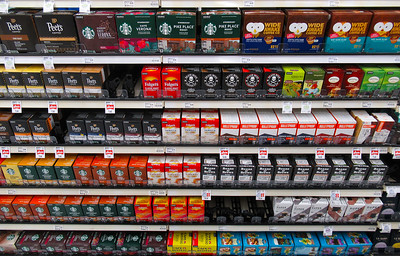Module 6: Introduction to Consumer Choices
Section outline
-

Microeconomics seeks to understand the behavior of individual economic agents such as individuals and businesses. Economists believe that we can analyze individuals’ decisions, such as what goods and services to buy, as choices we make within certain budget constraints. Generally, consumers are trying to get the most for their limited budget. In economic terms they are trying to maximize total utility, or satisfaction, given their budget constraint. The analysis in this chapter will build on the budget constraint that we introduced in the Choice in a World of Scarcity chapter. This chapter will also illustrate how economic theory provides a tool to systematically look at the full range of possible consumption choices to predict how consumption responds to changes in prices or incomes.
Upon completion of this module, you will be able to:- Calculate total utility
- Propose decisions that maximize utility
- Explain marginal utility and the significance of diminishing marginal utility
- Explain how income, prices, and preferences affect consumer choices
- Contrast the substitution effect and the income effect
- Utilize concepts of demand to analyze consumer choices
- Apply utility-maximizing choices to governments and businesses
- Evaluate the reasons for making intertemporal choices
- Interpret an intertemporal budget constraint
- Analyze why people in America tend to save such a small percentage of their income
To achieve these objectives: [Edit these items to match your resources and activities.]
- Read the Module 6 Introduction
- Read Chapter 6 in the course textbook, Microeconomics.
- Complete Module 6 Discussion.
- Complete Module 6 Quiz.
- Complete the Module 6 Assignment.
- For course instructors, list any other reading assignments here. [Include all reading assignments here that are outside of Moodle. Be as
concise as possible. More information can be included in the
third-party section below, if necessary.]
- Complete the [specific activities in the module. Include all in the order you want them completed.]
Module Pressbooks Resources and Activities
You will find the following resources and activities in this module at the Pressbooks website. Click on the links below to access or complete each item.
-
-
Module 6 In Class Activity (hide from students)
Course SLO 1: Identify the basic economic principles that serve as the foundation of economic analysis
Course SLO 2: Understand the interaction of supply and demand in determining prices and the role of prices in coordinating economic activity
Course SLO 6: Discuss the basic theories behind consumer and producer behavior
Module SLO: 6.1.3 – Explain marginal utility and the significance of diminishing marginal utility
Diminishing marginal utility holds that the additional utility decreases with each unit added. It is another example of the more general law of diminishing returns that we’ve seen in an earlier chapter, Choice in a World of Scarcity.
- Pick a good or service and explain how or why one would experience diminishing marginal utility for this good. It may also help to explain over what time horizon you would experience this diminishing marginal utility.
- Explain why is it important to consider the concept of diminishing marginal utility for the good you selected?
Hint: Section 1, Consumption Choices, provides example that demonstrates diminishing marginal utility using movies and t-shirts.
Instructor Notes:
With Diminishing Marginal Utility, we will see that marginal utility decreases as we consume more of a good. A common example deals with pizza. The first slice is great, but as we consume more and more, slices become less and less appealing. This becomes important when considering purchasing a good as we will spend less for additional units of a product than the initial. This is why firms may offer bulk pricing, or 50% off of a second product; gas stations may charge $2 for 1 soda pop, or $3 for 2 soda pops.
Background Colour
Font Face
Font Kerning
Font Size
Image Visibility
Letter Spacing
Line Height
Link Highlight
Text Colour
